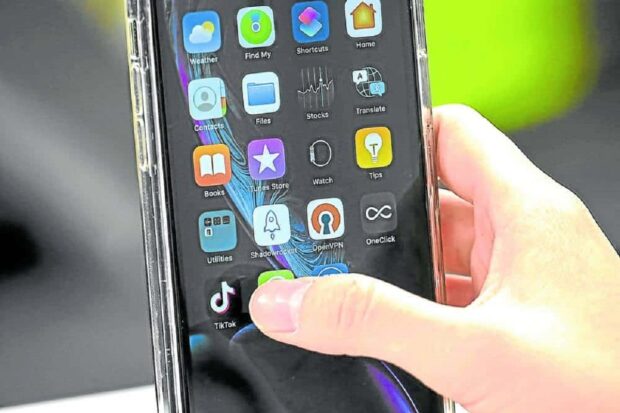NO DIRECT EFFECT A World Health Organization-commissioned study has found that despite the widespread use of wireless devices like cell phones in the past 20 years, there has been no increase in brain cancer cases. Agence France-Presse MANILA- Phili...
 NO DIRECT EFFECT A World Health Organization-commissioned study has found that despite the widespread use of wireless devices like cell phones in the past 20 years, there has been no increase in brain cancer cases. —Agence France-Presse
NO DIRECT EFFECT A World Health Organization-commissioned study has found that despite the widespread use of wireless devices like cell phones in the past 20 years, there has been no increase in brain cancer cases. —Agence France-Presse
MANILA- Philippines — There is no link between cell phone use and an increased risk for brain and head cancerssloto cash, according to a new World Health Organization-commissioned review of thousands of available published evidence worldwide.
Led by the Australian Radiation Protection and Nuclear Safety Agency (Arpansa), the systematic review examined more than 5,000 studies from 1994 to 2022, making it “the most comprehensive review to date,” lead author Ken Karipidis said in a statement on Wednesday.
“The findings of this systematic review align with previous research conducted by Arpansa showing that, although the use of wireless technology has massively increased in the last 20 years, there has been no rise in the incidence of brain cancers,” explained Karipidis, Arpansa’s assistant director of health impact assessment.
Article continues after this advertisementThe final analysis included 63 studies that were assessed by 11 investigators from 10 countries, including the Australian government’s radiation protection authority.
FEATURED STORIES TECHNOLOGY vivo launches V40 Lite with 5000mAh battery covered by 50-month warranty, starts at Php 13,999 TECHNOLOGY Galaxy Buds3 Pro: Delivering tailored sound wherever you go TECHNOLOGY Very mindful, very intuitive: ASUS’ most superior AI PC yet, the Zenbook S 14, empowers you to achieve moreThe review was published in the Environment International journal on Aug. 30.
It assessed the evidence from human observational studies for the link between exposure to radio-frequency electromagnetic fields (RF-EMF), and the risk of the most investigated types of cancer: brain tumors (glioma, meningioma, acoustic neuroma), pituitary tumors, salivary gland tumors in adults, and brain tumors among children.
Article continues after this advertisementAlso called radio waves, RF-EMF are emitted from an antenna to a receiver and used to transfer information quickly over great distances.
Article continues after this advertisementMobile phones—including other devices that use wireless technology such as laptops, radio and TV transmission towers, and cell sites—emit RF-EMF.
Article continues after this advertisementBrain and head cancers have been a concern among health authorities since cell phones are used over long periods of time and close to the head. Studies showed that ionizing radiation—which is emitted by X-rays and CT scanners—has been found to cause some brain cancers.
But radio waves emitted by cell phones are nonionizing, which means their energy is too low to damage the human DNA, and thus, could not cause changes to genes that may increase the risk of cancer.
Article continues after this advertisementNo overall association
Overall, the review found no overall association between cell phone use and cancers. It also did not find any link with prolonged use of cell phones at 10 years or more, nor with the amount of time spent on mobile phones.
“For RF-EMF exposure to the head from mobile phone use, there was moderate certainty evidence that it likely does not increase the risk” of head and brain cancers for both adults and children, the study noted.
The WHO-International Agency for Research on Cancer (IARC) currently classifies RF-EMF as “possibly carcinogenic,” or belonging to Group 2B, a category used when the agency cannot rule out a potential link.
RF-EMF, along with 321 other agents, including aloe vera leaf extract, belong to this category.
Limited evidence
“When the IARC classified radio wave exposure as a possible carcinogen to humans in 2013, it was largely based on limited evidence from human observational studies,” Karipidis said.
Subscribe to our daily newsletter
“This systematic review of human observational studies is based on a much larger dataset compared to that examined by the IARC, that also includes more recent and more comprehensive studiessloto cash, so we can be more confident that exposure to radio waves from wireless technology is not a human health hazard,” he added.
TOPICS: WHO READ NEXT World pumps out 57 million tons of plastic pollution a year �... How to pick the best laptop for your needs EDITORS' PICK NBA: Nuggets give Aaron Gordon 4-year, $133M extension Party-list system: What to know ahead of 2025 polls WPS: US missile deployment to PH key for combat readiness – US general Israel strikes south Beirut after evacuation warnings UPDATES: 2025 elections precampaign stories PBA Finals a duel between 2 great minds steering 2 great sides MOST READ DILG identifies 38 hotspots ahead of 2025 polls LIVE UPDATES: Tropical Storm Kristine VP Sara Duterte says she still sees Sen. Marcos as a 'friend' AFP reprimands cadet who asked for Marcos wrist watch View comments